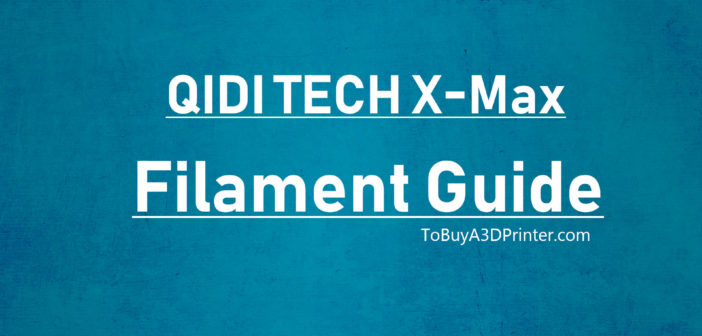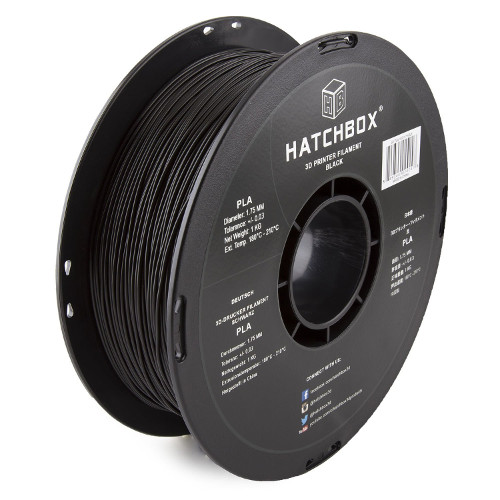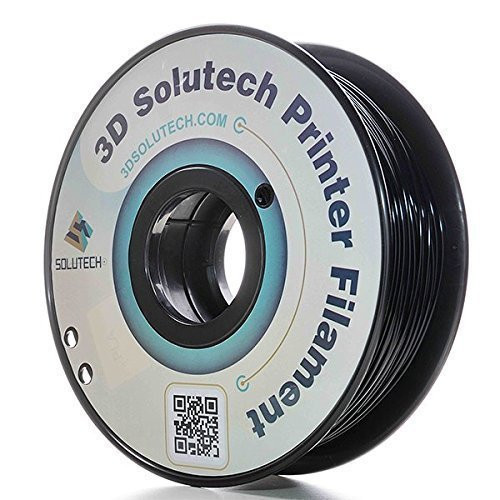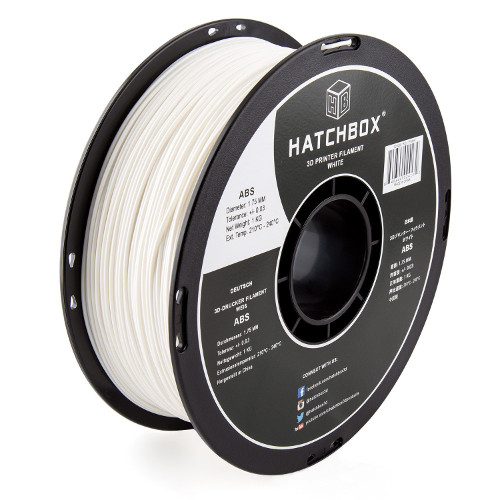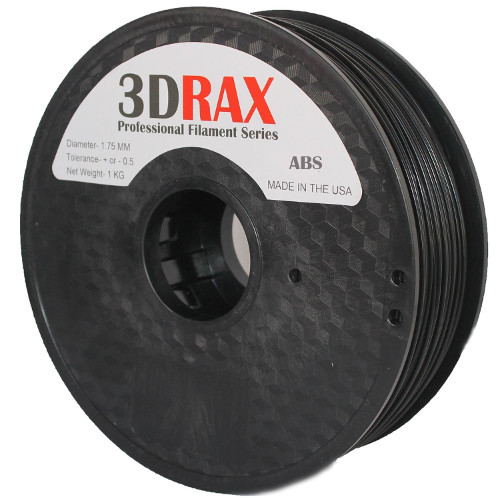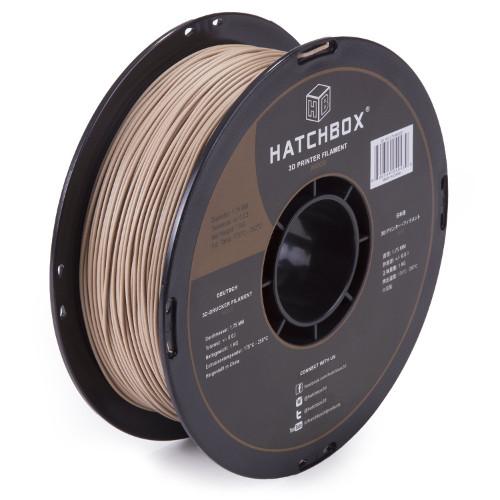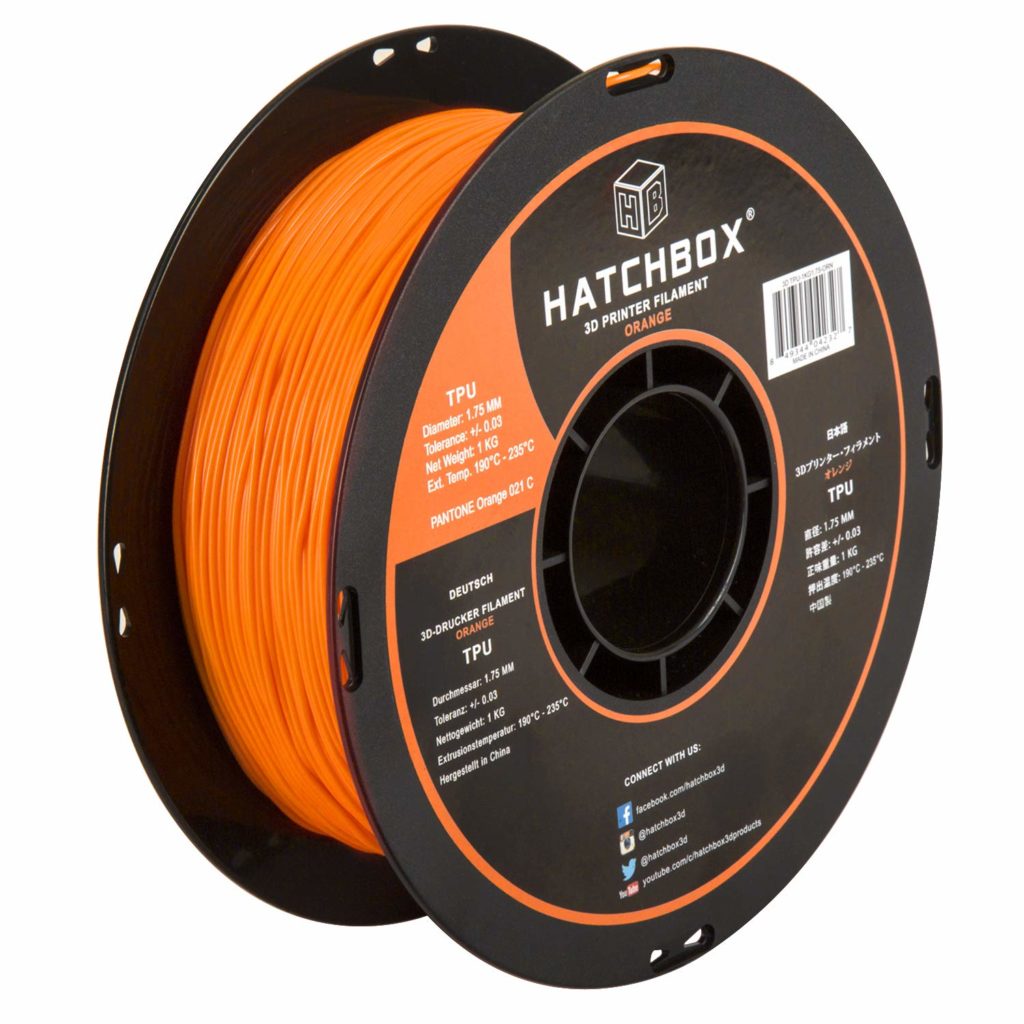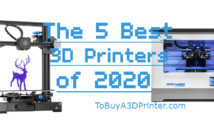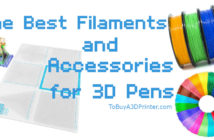The QIDI TECH X-Max gives users ultimate flexibility when it comes to filament. Try everything from PLA to Nylon with this advanced 3D printer. This guide discusses the difference between each filament type alongside our suggestions for trusted filament brands.
PLA
Biodegradable and non-toxic, PLA is the filament of choice for most people. Extruding at temperatures between ~190-230C, PLA does not require a heated print bed to successfully adhere to the build plate. If you choose to use a heated print bed, PLA adhere best at temperatures between 60C and 80C.
The best thing about PLA is how versatile it is. PLA is used to make wood, metal, glow-in-the-dark, and many other hybrid filaments.
Properties
- Medium strength and durability
- Fairly brittle
- Easy to work with
- Non-toxic with a pleasant smell
Best PLA for the QIDI TECH X-Max: Hatchbox
Budget PLA for the QIDI TECH X-Max: Solutech
ABS
ABS is often used when printing working prototypes or functional parts. That’s because it’s a bit more flexible and durable than PLA, and can better withstand sunlight and moisture exposure. ABS prints at pretty high temperatures around 210-250C, and requires a heated print bed at around 60-110C.
Properties
- Highly durable and impact resistant
- More flexible than PLA
- Can sometimes be tricky to print with
- Strong chemical odor
Best ABS for the QIDI TECH X-Max: Hatchbox
More Details ❯Budget ABS for the QIDI TECH X-Max: 3DRAX
PETG
PETG is almost as popular as PLA or ABS because it’s easy to use and delivers a tough, flexible finish. Models made with PETG are also recyclable, making this filament an eco-friendly option. PETG is also the filament of choice when users need a clear material. Printing at temperatures between 220-240C, PETG works great with or without a heated print bed.
Properties
- More flexible than either ABS or PLA
- Good durability
- Easy to print with
- Recyclable
Best PETG for the QIDI TECH X-Max: OVERTURE
Budget PETG for the QIDI TECH X-Max: Stonghero3D
Wood
People love using wood filament because it looks, smells, and reacts just like wood. You can even stain wood filament to make it look more like natural wood. The uses are endless, and the good news is that wood filament is easy to work with, requiring a low 190-220C extrusion temperature and no heated print bed for excellent results.
Properties
- Looks and feels like natural wood
- Medium strength and durability
- Low flexibility
- Easy to use
Recommended Wood Filament for the QIDI TECH X-Max: Hatchbox
TPU
TPU is a flexible filament that is easier to print with than most other flexible filaments due to its firmer consistency. TPU produces durable, rugged prints that are still flexible and bendable. For best results, print with this filament at slower speeds below 30mm/s. Set the extruder between 220-240C and the print bed around 60C.
Properties
- Produces rubbery, flexible prints
- High durability and heat resistance
- Uses for both industry and consumer prints
- Relatively easy to print with
Recommended TPU Filament for the QIDI TECH X-Max: Hatchbox
Nylon
Nylon is a high-temperature filament that results in a highly durable and flexible models. In fact, it would be the perfect filament if not for its tricky print conditions. Most nylon prints at temperatures between 240-260C, and requires a controlled environment with a heated print bed set around 50-100C.
Properties
- Extremely strong, durable, and flexible
- Great filament for outdoor objects
- Tricky to print with
Recommended Nylon for the QIDI TECH X-Max: Polymaker

PC
This advanced filament is for experienced users. Not only is it difficult to print with, but it puts off some heavy fumes so safety is essential. The benefit of using PC is that it’s remarkably durable and heat resistant. PC is similar to nylon but not as flexible. Print at around 260-300C with your heated print bed set at least 100C. A hotter print bed is better, as it helps prevent warping.
Properties
- Extremely durable and heat-resistant
- Requires high extrusion temperatures
- Tricky to print
Recommended PC for the QIDI TECH X-Max: PRILINE

